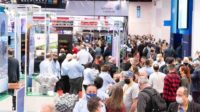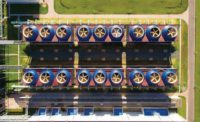The HVACR industry has come a long way since cast-iron Franklin stoves began pumping out heat in the mid-1700s and Willis Carrier introduced the world to air conditioning in 1902.
And while today’s innovations have certainly simplified the way comfort is delivered, there’s plenty more to be learned. This notion was showcased at the 2018 ASHRAE Annual Conference, June 23-27 in Houston.
FIBEROPTICS
At the event, Brian M. Fronk, Ph.D., P.E., assistant professor, mechanical engineering, Oregon State University, described how fiberoptics can be used to allow engineers to validate models and better understand system dynamics by measuring cross-sectional or axial temperature distribution in a duct system. He explained how fiberoptics may be used to quantify multiple temperatures along a pipe, measure condensation heat transfer, define the axial surface temperature of a tube, and more.
HEAT TRANSFER QUANTIFICATION
Stefan Elbel, chief engineer of Creative Thermal Solutions and an assistant research professor, University of Illinois at Urbana-Champaign, examined a new quantification method for local air-side heat transfer using an optical method.
While a number of existing methods present averages, such as the Wilson plot, the experimental side is lacking. Mass transfer measurements may be conducted using models via naphthalene sublimation, though there are drawbacks with this method as well.
Elbel presented a streamlined solution centered on an acidic coating that can be attached to any metal surface. In this method, a well-mixed tracer gas and air mixture flows across the coated surface and, depending on the amount of mass transfer and how much tracer gas is absorbed, the coating changes color.
CAPACITANCE AND VOID FRACTIONS
Davide Ziviani, a post-doctoral research associate at Purdue University’s center for high-performance buildings, introduced a sensor designed to overcome the relational challenges that exist between the measured capacity and void fraction.
Many void fraction and capacitive measurement techniques exist. While each comes with advantages and disadvantages, the concern is that the relationship between the void fraction and measured capacitance has to be individually determined for each design and application.
Ziviani, and the Purdue team, therefore developed a sensor that consists of a probe and transducer. The probe contains sensing and guard electrodes and the transducer comprises the electronics necessary to measure the capacitance between the sensing electrodes of the probe.
Ziviani’s research concluded that electrical capacitance of the flow is an effective way to assess the flow behavior, the capacitance of a fluid is a direct function of the amount of each phase, and that a sensor can be developed (and is being developed) to measure the void fraction based on the capacitance of the flow. Ongoing research aims to develop a void fraction sensor designed to measure instantaneous and average oil circulation ratios in horizontal and vertical lines.
FRAMING THE FUTURE
Fronk, Elbel, and Ziviani’s research indicate that novel ideas exist in every nook and cranny of the HVACR industry. While yesterday’s engineers have made great progress, we’re just cracking the surface, and the future relies on the experimental efforts of today’s engineers. Are you up for the challenge?
INDUSTRY EVENTS 2018
AUGUST 12-17
ACEEE 2018 Summer Study on Energy Efficiency in Buildings
Washington, D.C.
aceee.org/conferences/2018/ssb#overview
AUGUST 16-17
IGSHPA Certified Geothermal Inspector Training
Stillwater, Oklahoma
igshpa.org/certified-geothermal-inspector
AUGUST 21
Mulcahy’s Steam Systems Seminar
Eagan, Minnesota
mulcahyco.com/training/seminars
AUGUST 20-22
AEE Fundamentals of Measurement & Verification: Applying the IPMVP
Chicago
bit.ly/AEE-IPMVP





